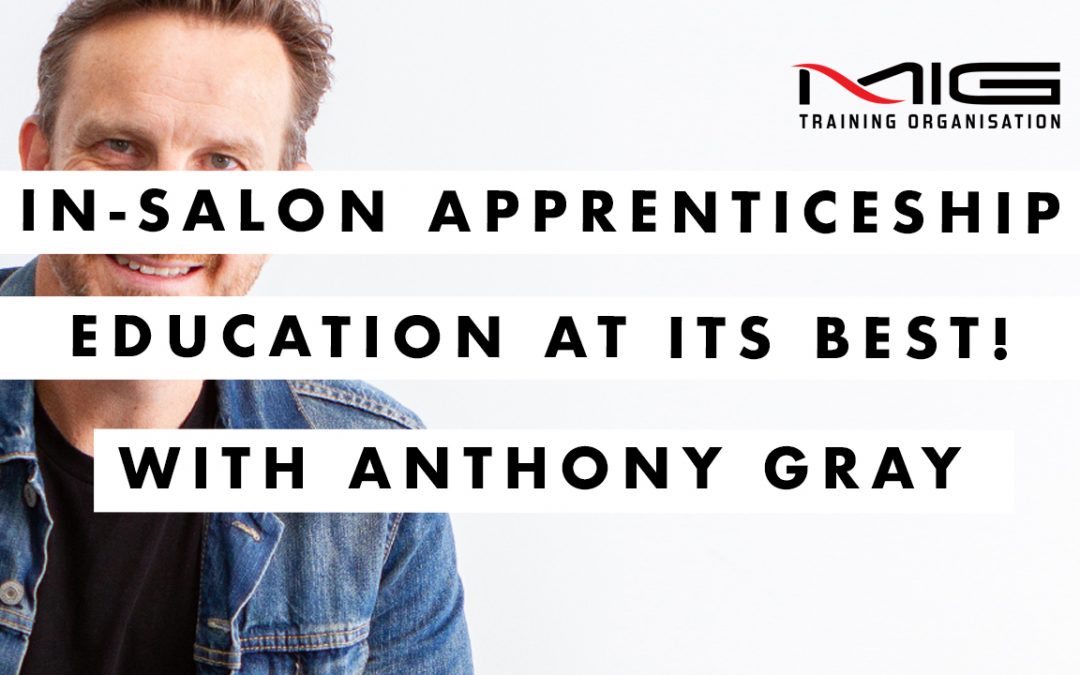
Apprenticeship Incentives
The start of 2021 has seen an incredible upswing in the numbers of new apprenticeship signups that’s coming through the doors. We’re really hopeful, fingers crossed that the signs of national recovery are happening in 2021. That this growth will happen across the board and it will have a huge pipeline of hairdressers coming through the system. Fueling this demand is the incredible sums of money that is coming our way through the boosting apprenticeship commencement wage subsidy. It’s a $1.2 billion scheme and it’s designed to support businesses to take on new apprentices. The funding is for all trades, but in hairdressing and barbering I suppose it’s there to attract skilled workers that can act as the future building blocks of our industry.
In real terms, the boosting apprenticeship commencement wage subsidy means that a salon who engages an apprentice might be eligible for up to 50% of their wage. That’s a maximum $7000 a quarter, amazing figures. But that’s not all, there’s more funding as well. We’ve been blessed for new entrants, with funded programs through the job trainer scheme. Job Trainer is a $1 billion dollar by funding partnership between federal and state government and it’s designed to provide low cost or fee free courses targeted at 17 to 25 year olds who are looking for work. So what does that mean for hairdressing, it really means Certificate II in Salon Assistant.
Traditionally Certificate II in Salon Assistant is the domain of school based trainees. But what it will offer is a fee free or low cost option for organizations to provide industry with new entrants who have some basic skills and can hit the ground running. While the following list isn’t exhaustive, the qualification includes the building blocks and the key elements of that qualification include a number of things. It includes salon procedures, includes an understanding of shampoo and basin, blow drying, reception and communication, being able to greet prepare clients, and then obviously, color application and massage.
The Cert II in Salon Assistant can provide a perfect introduction to the trade for an aspiring hairdresser. And it could also, in my mind help reduce the high rate of cancellation that can be the bain of a lot of salons. Successful completion of a pre-vocational programs such as Cert II helps to sift out those who are unsure if hairdressings for them. Ideally, a strong industry based program run by a college like ourselves will incorporate lots of industry placement and that will allow salons to have a look at potential staff and invariably try before they buy. Because of the free nature of the Job Trainer program it provides industry an unprecedented opportunity to compete for new entrants with other careers. And for us it also helps us make the most of opportunities to deliver programs in college that exciting and contemporary.
Programs will need to be really focused on developing key soft skills and furthermore, ongoing success of Cert II programs only really works if your colleges align themselves really closely with salons. In the end, increasing the number of qualified salon assistants is pointless if salon owners are unwilling to take them on due to a lack of skill, and the lack of the ability to add value. So finding ways to make that happen is really important, particularly from a college perspective, in making the skills that they have really industry relevant. For salon owners looking to access those who completed the Job Trainer, qualification or engage with those who are undertaking qualifications as part of the program over the coming months, the best course of action is to contact your RTO like ourselves, as we obviously have a huge role to play in attracting new people to our industry.
With substantial government funding in place by the boost apprenticeship commencement wage subsidy, and the new entrant job training program, it’s the first sign of green shoots and new growth for the future of the industry in some time. The challenge for us is to excite and inspire those who’ve been newly attracted to industry. But above all, the challenge is to retain and nurture those people once they come so that they decide to stay.


